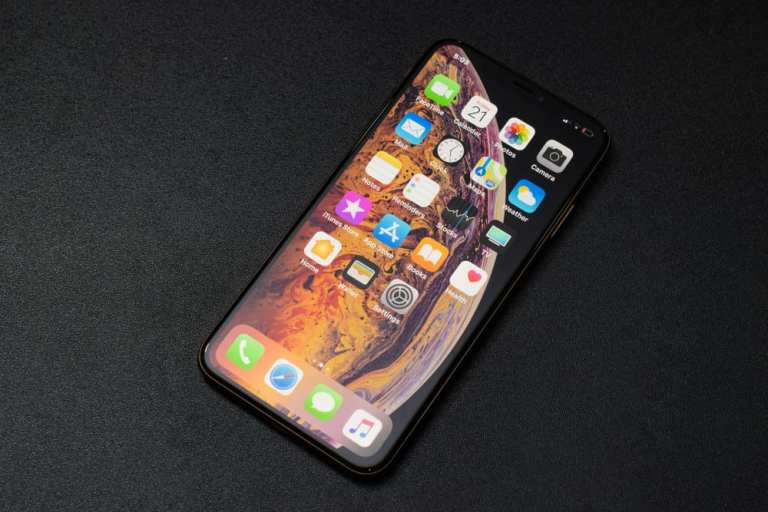The iPhone Is No Longer The Majority Of Apple’s Sales

It’s been a good run, but even the iPhone couldn’t stay in the top spot forever.
After being the majority of Apple’s revenue since 2012, the iPhone accounted for only 48.3 percent of Apple’s overall revenue in FYQ3, the first time that it hasn’t contributed over half of Apple’s sales in over seven years.
Still, it would be hard to say it was a particularly bad day for Apple, which managed to beat analysts’ earnings forecasts on the top and bottom line and saw bigger than expected growth in both its wearables and services departments.
CEO Tim Cook was, as is normal, excited about Apple quarterly results — particularly in terms of the firm’s expanding ecosystem, the “absolutely blowout quarter for wearables” just reported and for all the things that are coming next.
“On so many fronts there’s an enormous amount to look forward to over the next few months, including the launch of new services like Apple Arcade, Apple TV+, and Apple Card. And without giving too much away, we have several new products that we can’t wait to share with you,” Cook told investors on the post-release call.
On the big numbers, Apple reported a 1 percent year-on-year rise in revenue to $53.8 billion — though EPS fell 7 percent year-on-year to $2.18. But both the top and bottom line performance came in ahead of expectations of $53.39 billion and $2.10 per share respectively.
Apple’s iPhone revenue was below the $26.31 billion forecast by analysts ahead of the release, coming in at $25.99 billion. That is a drop of 12 percent, which Cooked noted is a “a significant improvement to the 17% year-over-year decline in Q2. He also noted that the quarter that ended in June, when viewed through another lens, it is also a return to growth for the iPhone.
“iPhone our retail and online stores returned to growth on a year-over-year basis in the month of June. Our active installed base of iPhone reached a new all-time high and was up year over year in each of our top 20 markets, underscoring the quality of our products and the satisfaction and loyalty of iPhone customers around the world.”
Cook, however, had much more to say about Apple wearable and services offerings, both of which put up big numbers in the last fiscal quarter. Apple’s wearables business, which includes Apple Watch, AirPods and Beats headphones, saw growth rates over 50 percent in the quarter, according to CFO Luca Maestri. Getting a particularly gleeful call-out during Cook’s earnings call was Apple Watch, which reportedly set a new June quarter revenue record. Cook also reported that over 75 percent of customers buying Apple Watches in the June quarter were buying their first Apple Watch.
Services — home to Apple Pay, Subscriptions, Apple Care and the App Store — saw 13 percent growth, slightly under analyst predictions. Cook did note that barring the settlement of a lawsuit and FX issues, that growth would have come in ahead of analyst estimates at 18 percent.
Payments peeps even got a look in on some Apple Pay numbers, albeit less specific ones than they might have otherwise liked to have seen. “Apple Pay is now completing nearly 1 billion transactions per month, more than twice the volume of a year ago. Apple Pay launched in 17 countries in the June quarter, completing our coverage in the European Union and bringing us to a total of 47 markets currently. Based on June quarter performance, Apple Pay is now adding more new users than PayPal and monthly transaction volume is growing four times as fast.”
All in all, services are becoming a big, high-margin contributor to Apple’s business — according to Maestri, services accounted for 21 percent of Apple revenue and 36 percent of gross margin dollars last quarter.
It is perhaps why as much as Cook talked about Apple’s individual offerings to analysts during the call, he was very focused on telling the story of the power and appeal of entire Apple ecosystem of devices, services and offerings for consumers. Some things that one might have assumed might be part of that discussion were absent — Siri, for example, got barely a single mention in passing — but the theme was otherwise highly recurring.
“It’s worth taking a step back and digesting the bigger picture here. These updates are the latest steps in a broader strategic effort to make the user experience across iOS, macOS, iPadOS, watchOS and tvOS more effortless and more intuitive. Apple is alone in offering this kind of value and ecosystem to its customers,” Cook noted, before calling out the 420 million paid subscriptions Apple has collected across its services platform, with a goal to pass the 500 million mark during 2020.
As for next quarter, Apple is forecasting revenue of between $61 billion and $64 billion, solidly ahead of the Street’s $60.9 billion estimate. That news pushed Apple share price up 4 percent in after hours trading.
The question to watch when markets are open Wednesday (July 31): will Apple’s performance rocket it back over the $1 trillion market cap line?